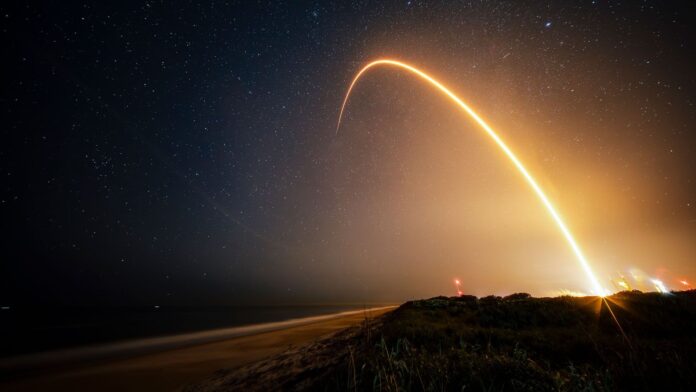SpaceX has further solidified its dominance in space launch with the successful deployment of 29 additional Starlink satellites, marking the company’s 150th Falcon 9 mission of the year. This milestone underscores SpaceX’s unprecedented operational tempo and the rapid expansion of its low Earth orbit (LEO) broadband internet constellation.
Mission Details and Timeline
The Falcon 9 rocket launched from Space Launch Complex 40 (SLC-40) at the Cape Canaveral Space Force Station in Florida at 2:53 a.m. EST (0753 GMT) on Saturday, November 22. Roughly an hour and five minutes later, all 29 Starlink satellites from Group 6-79 were deployed into their designated orbits.
Booster Reuse and Fleet Growth
Notably, this mission featured the ninth reuse of Falcon 9 first stage Booster B1080, demonstrating SpaceX’s commitment to cost reduction through reusable rocket technology. The booster landed successfully on the droneship A Shortfall of Gravitas in the Atlantic Ocean. This brings the total number of active Starlink satellites in orbit to over 9,000, with more than 10,400 launched since 2019.
The Significance of Rapid Deployment
SpaceX’s ability to launch at this frequency is unusual. It is pushing the boundaries of what’s possible in commercial spaceflight. The company has launched more rockets this year than many countries have done in their history. This pace enables SpaceX to rapidly expand Starlink’s coverage, providing broadband internet access to underserved regions globally.
Continued Expansion and Future Implications
Saturday’s launch also represented the 568th overall flight of SpaceX’s Falcon 9 launch vehicle since 2010. With each successive mission, SpaceX continues to refine its processes and lower the cost of space access. This sustained operational cadence positions the company as a critical infrastructure provider for both commercial and governmental space activities.
SpaceX’s aggressive launch schedule demonstrates not only technological prowess but also a strategic business model focused on scalability and efficiency in the growing space economy.






































































